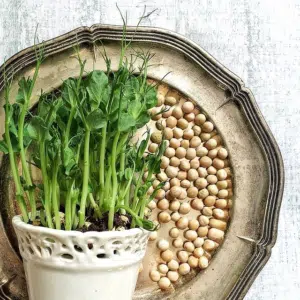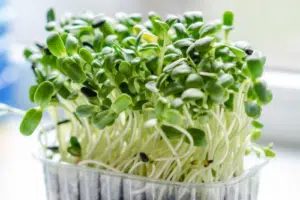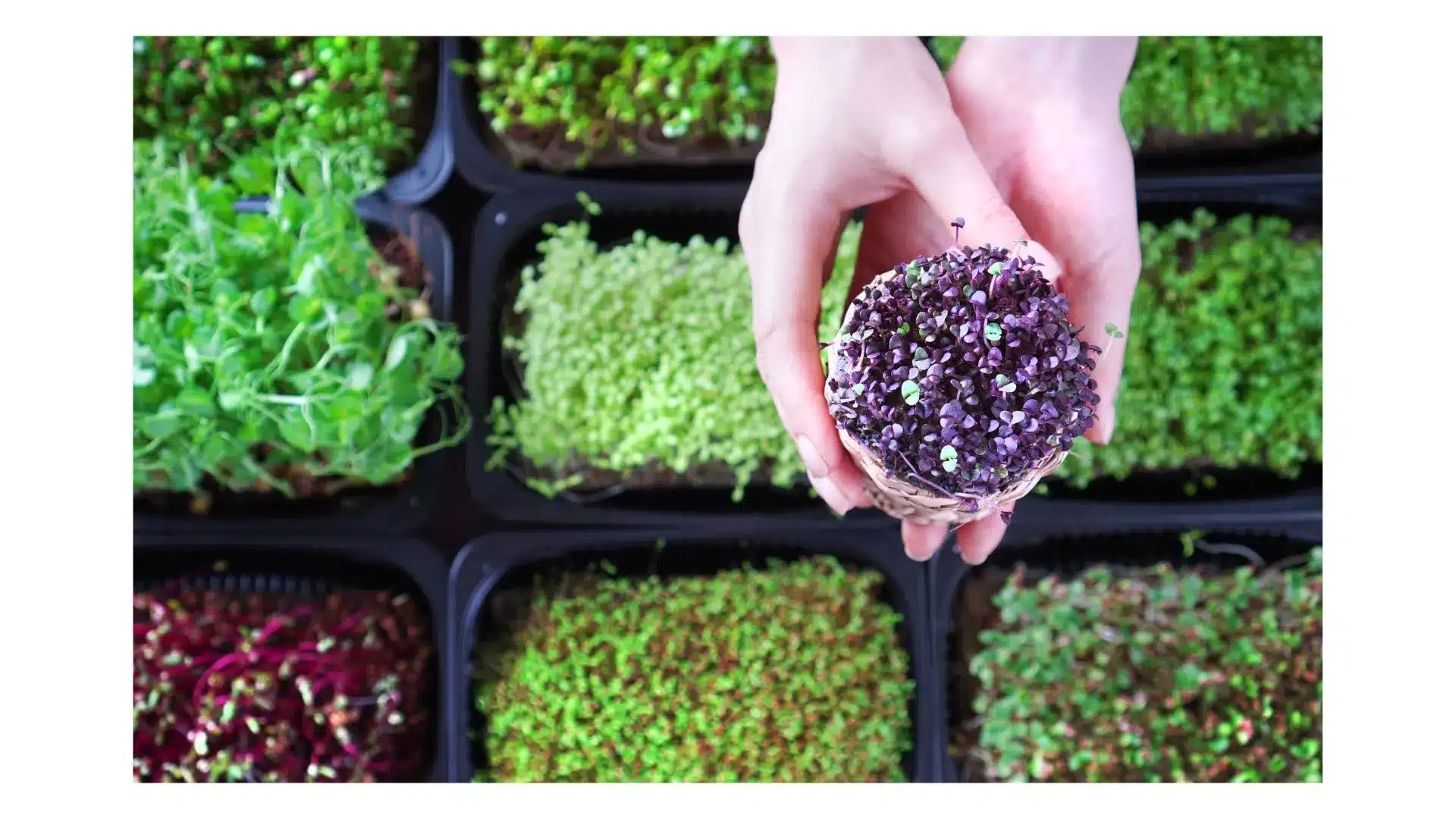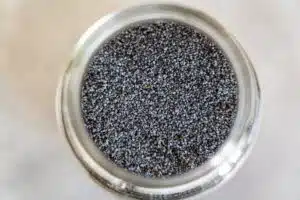Have you ever thought of cultivating delicious greens that not only provide nutrition per square inch but also are chemical-free? Have you ever explored how to grow microgreens using microgreens seeds? Using these little greens, you can save time and money while still obtaining many nutrients. Microgreens are a good start to a healthy life. In the organic food industry, microgreens have taken over like a cyclone! Because of their popularity, microgreens are quite famous among foodies.
What are Microgreens?
Microgreens, as the name implies, are little replicas of mature plants. It is simply the plant’s budding stage when the leaves are just starting to sprout and the stalks are just 2-3 inches taller. Did you ever think about the fact that how to grow microgreens without soil? Is it possible?
Microgreens, which are frequently confused with sprouts, are distinct from infant shoots or sprouts as they are cultivated on soil, whereas sprouts germinate in water. They are used as a nutritional supplement, a visual enhancement, and to improve flavor and texture. Microgreens can enhance the sweetness and spiciness of a cuisine. They are currently regarded as a specialty green among luxury supermarkets, suitable for garnishing salads, soups, sandwiches, and platters. They can also be used as the main vegetable in some recipes for added flavor and nutrition. Many recipes call for them as a garnish, while others call for them as the main element.
Are you looking for a healthy way to supplement your everyday diet? That’s where microgreens come in. Examples include garlic pea shoots, micro cabbage in cabbage soup, or radish microgreen coleslaw instead of cabbage. Broccoli microgreen is considered a very nutritious microgreen. As microgreens become more popular for their powerful flavor and nutrients, creative chefs are experimenting with them. A section of this blog talks about how to grow microgreens using microgreens seeds indoors and the process is much easier than it seems.
Microgreens first appeared on chefs’ menus in San Francisco in the 1980s. Microgreens have been grown in Southern California since the mid-1990s. Initially, only a few types were available like arugula, basil, beets, kale, cilantro, and a colorful combination of those termed a “Rainbow Mix.” They have moved eastward from California, and a rising number of types are now produced in most areas of the United States. Today, the microgreens sector in the United States is made up of a range of microgreens seed companies and producers.
Microgreens can be cultivated from a variety of seeds. The most popular variations are created using microgreens seeds from the plant families listed below:
Brassicaceae family include cauliflower, broccoli, cabbage, watercress, radish, and arugula.
Asteraceae family include lettuce, endive, chicory, and radicchio
Apiaceae family include dill, carrot, fennel, and celery.
Amaryllidaceae family include garlic, onion, leek
Amaranthaceous family include amaranth, quinoa Swiss chard, beet, and spinach.
Cucurbitaceae family includes melon, cucumber, and squash.
Rice, oats, wheat, corn, and barley, as well as legumes such as chickpeas, beans, and lentils, are sometimes produced into microgreens. The taste of microgreens varies depending on the cultivar, and can range from neutral to peppery, somewhat acidic, or even bitter. In general, their flavor is described as powerful and concentrated.

Why are microgreens nutritious?
Microgreens are high in nutrients. While the nutrient content of each variety varies slightly, most kinds are high in potassium, iron, zinc, magnesium, and copper. Microgreens are also high in useful plant components such as antioxidants (1). Their nutritious content is concentrated, which means they frequently contain higher levels of vitamins, minerals, and antioxidants than the same number of mature greens.
In fact, studies comparing microgreens to more mature greens show that nutritional levels in microgreens can be up to nine times higher than in mature greens. They also have a greater diversity of polyphenols and other antioxidants than their competitors (2). Even though vitamin and antioxidant levels varied, those found in microgreens were up to 40 times higher than those found in mature leaves. As it turns out, microgreens have higher nutritional levels when compared to more mature plants.
What are the health benefits of microgreens?
Vegetable consumption has been related to a lower risk of numerous diseases. This is due to the high levels of vitamins, minerals, and beneficial plant chemicals found in them. Microgreens have comparable and frequently larger levels of these elements than mature greens, which provide various benefits as a dietary supplement. A variety of fresh plant items contain vitamins, minerals, and fiber. These nutrients can aid in the prevention of a variety of ailments, the management of weight, and the improvement of both mental and physical health and well-being. Microgreens can provide all of these advantages.
Many plant-based diets contain vitamins, minerals, and antioxidants that are involved in hundreds of biological functions. Antioxidants aid in the elimination of unstable waste molecules known as free radicals by the body. Some free radicals can be removed by the body. Food antioxidants can aid in the removal of more of them. Antioxidants are found in plant-based meals. Brassica family microgreens, which include broccoli, are high in vitamin E, a phenolic antioxidant. Microgreens from the Asteraceae family, such as chicory and lettuce, appear to be high in vitamin A, or carotenoid antioxidants. Broccoli, cabbage, cauliflower, and brussels sprouts are all good sources of vitamin C.
Microgreens are high in polyphenols, an antioxidant class related to a lower risk of heart disease, which is one of the leading causes of death. Triglyceride and LDL cholesterol (bad cholesterol) levels are reduced by microgreens. Antioxidant-rich diets, notably those high in polyphenols, have been related to a lower risk of Alzheimer’s disease. Antioxidants may help lower the type of stress that prevents sugar from entering cells effectively reducing the risk of diabetes. Consuming antioxidant-rich fruits and vegetables, particularly those high in polyphenols, may reduce the incidence of certain cancers. Microgreens high in polyphenols are likely to have comparable effects.

How to grow microgreens on your own?
Microgreens are simple to grow because they don’t require much equipment or time. They can be grown indoors or outdoors all year. The requirements for growing them include high-quality microgreens seeds, a healthy growing medium, such as potting soil or homemade compost in a container, or a single-use growth pad created exclusively for growing microgreens and proper illumination — ideally, 12–16 hours each day of sunlight or ultraviolet lighting. So, here is the procedure on how to grow microgreens on your own.
The procedure for growing microgreens is as follows:
The container must be filled with soil, careful not to overfill it, and water lightly.
Then spread the microgreen seeds of your choice as evenly on top of the soil.
Lightly mist your microgreens seeds with water and cover the container with a plastic lid
The tray has to be checked on a daily basis and make sure to sprinkle the microgreens seeds with water as needed to keep them wet
After a few days remove the plastic lid until the seeds have germinated to expose them to light.
While the microgreens grow and color, water them once daily.
Microgreens are ready to harvest after 7–10 days.
Nutritional Content for Microgreens
You can consume enough microgreens to meet your daily vegetable nutritional requirements according to the Recommended Dietary Allowance (RDA). Dietary Reference Intakes (DRIs) are a set of reference values used to estimate nutrient intake in healthy persons, according to the Food and Nutrition Board of the Institute of Medicine, National Academy of Sciences. These values vary according to gender and age and include the following:
RDA:
The average daily consumption level necessary to meet the nutritional needs of 97-98 percent of healthy persons.
Adequate Intake (AI):
A value is determined where there is insufficient data to establish an RDA and set at the value assumed to ensure good nutritional benefit.
Tolerable Upper Intake Level (UL):
The maximum daily intake level is unlikely to have a negative impact on health.
A 100 g serving of microgreen mix contains around 28 caloric units, 2.2g protein content, 4.4g carbohydrate content, and 2.2g of fiber.
How to include microgreens in your diet?
Microgreens may add colour, flavour, and texture to any cuisine in addition to adding nutritious value. Microgreens can be added to meals as a garnish for salads, soups, flatbreads, or pizzas, to give nutritional value to a drink or smoothie, to serve as a side dish, to any main dish, to add flavour and colour to an omelette or frittata and to use as a replacement to lettuce in tacos, burgers, or sandwiches Herb microgreens can also be used to spice sweet recipes.
Microgreens are a fun and easy way to add fresh, nutritious produce to your meals. They can be a delicious addition to both sweet and savoury recipes. They are a low-cost, no-hassle way to grow vegetables.
Microgreens are at their healthiest when consumed right away, so what better way to grow them than in your yard or on your windowsill? They look just as lovely in a container as they do on your plates. Instead of buying expensive ornamental plants, try growing these adaptable ones at home.
Growing your own microgreens and eating them will provide you with twice the satisfaction. These superfoods, which are packed with powerful flavors and nutrition, add a lot to the daily nutrition that you follow or consume.
References –
- https://pubmed.ncbi.nlm.nih.gov/22812633/
- https://www.ncbi.nlm.nih.gov/pmc/articles/PMC3915300/





